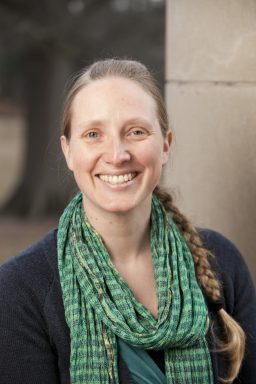Prof. Starobin Cautions about Legal Risks of Local Climate Policy Action

After President Trump announced his plan to withdraw the United States from the Paris Agreement, several US states and cities began to draw up independent plans to achieve the accord’s goals of reducing greenhouse gas emissions and preventing catastrophic climate change.
Yet, state and municipal governments face hurdles in their attempts to curtail planet-warming greenhouse gas emissions, according to Shana Starobin, an assistant professor of environmental studies and government at Bowdoin. With co-author Cary Coglianese, from the University of Pennsylvania Law School, she has published a series of essays in The Regulatory Review that look at some of the potential legal challenges smaller governments face in this quest.
The Regulatory Review is a daily online journal published by the Penn Program on Regulation at the University of Pennsylvania Law School that is aimed at policymakers, lawyers, and scholars.
One of the essays written by Coglianese and Starobin, “After a Federal Climate Policy Retreat, States Should Proceed With Caution,” starts out by noting that alternatives to federal action are not the ideal. The best course of action for the U.S. to tackle its contribution to a massive, worldwide problem is at the national level. But they note that “absent any realistic prospects for federal action in the near term, state and local policies are the only game in town.”
******
Starobin's intention with the series, she says, is not to discourage local action, but rather to provide realistic guidance. "We want to be optimistic and hopeful, but it’s important to think about the legal risks of local regulation and what could happen," she said in a recent interview. "Lots of communities want to have autonomy over driving what their futures will look like....In moving forward, there is a reality of legal constraints to consider."
The five articles in the series actually comprise a back-and-forth conversation between Starobin and Coglianese with two lawyers in California, Craig Segall and David Hults, who work for the California Air Resources Board (although Segall and Hults note that they wrote in their personal capacities). The series began with an essay that Starobin and Coglianese originally wrote for an online symposium in the Public Administration Review, which was then reprinted in The Regulatory Review. Segall and Hults responded to that initial essay, which began an exchange alternating between the pros and cons of state and local initiatives.
Although Segall and Hults argue that states, particularly large ones like California, can create climate policies that spur widespread change, Coglianese and Starobin warn that subnational governments will come up against legal hurdles. Specifically, Coglianese and Starobin point to a case study they have written about climate policy efforts in Albuquerque, New Mexico, where city leaders were drawn into a protracted legal battle with national business groups — a fight they ultimately lost — after trying to adopt more stringent local energy efficiency standards.
Starobin's research interests lie in "bottom-up regulation," as she calls it, and determining "the appropriate level of government for different kinds of regulation." Her fieldwork in Latin America, for instance, explains actions by local communities and regional governments that pursue autonomous environmental strategies — particularly when national governments are unwilling or incapable of taking action. Her most recent article on this topic appears this month in Global Environmental Politics.



